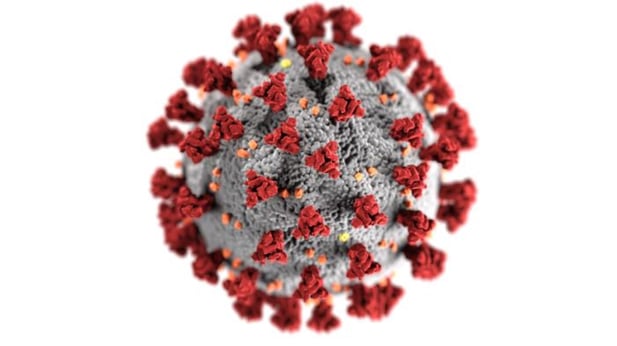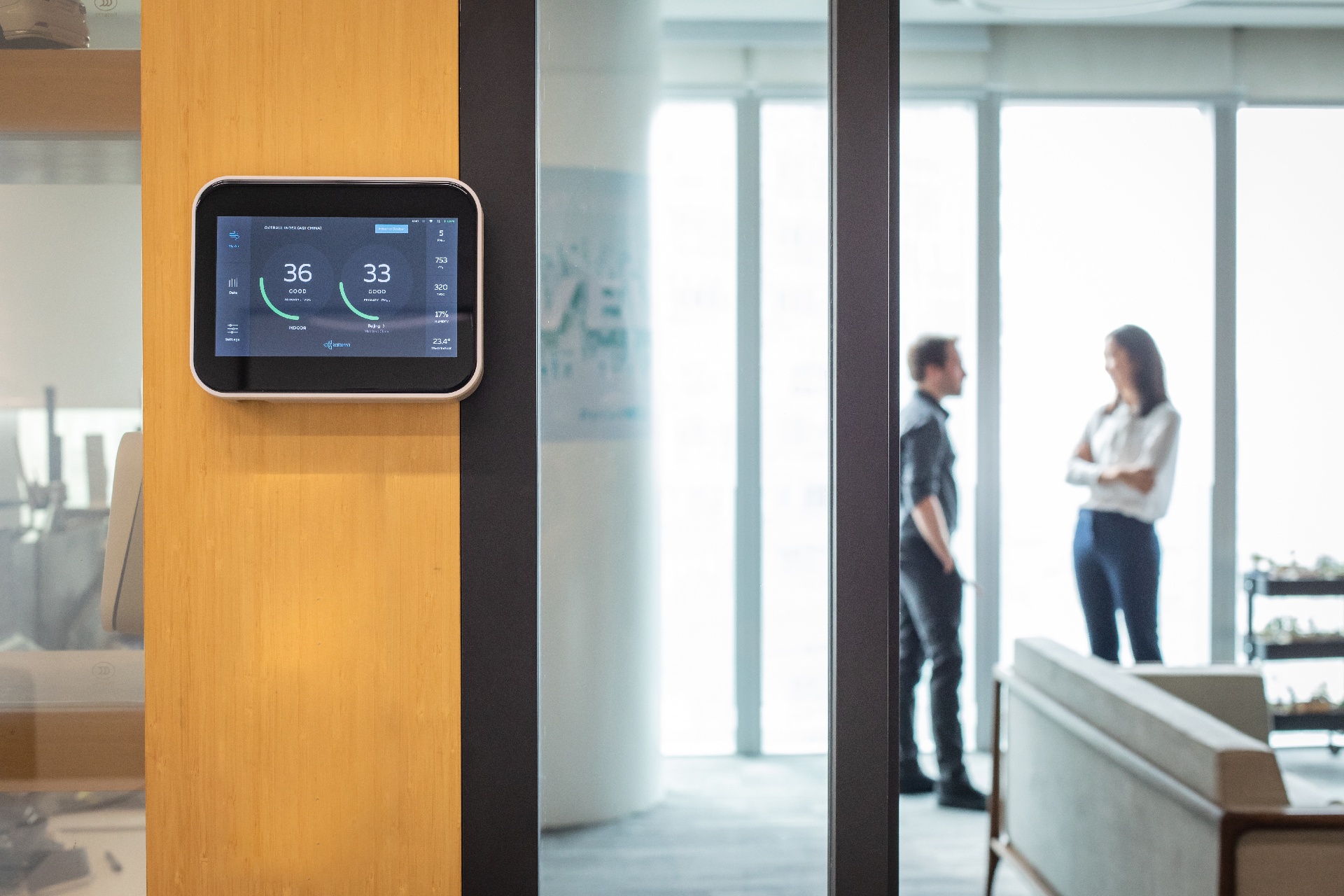Newsletter
After weeks of closures due to the coronavirus pandemic, many locations are beginning to implement their reopening plans.
With the reopening of the economy dependent on the effective management of COVID-19, many employers and building owners are looking for ways to minimize the threat of the new coronavirus.

We’ve created a guide that building management teams can utilize during reopening. We will address the following topics:
Air Quality Guide for Buildings: Strategies To Fight COVID-19 During Reopening
Before we begin our discussion of COVID-19 reopening strategies, let’s define a few items.
What Is the Novel Coronavirus (COVID-19)?
The novel coronavirus first appeared in late 2019 in Wuhan China. COVID-19 swiftly spread to the rest of the world, creating a global pandemic and public health emergency.
SARS-CoV-2, the virus responsible for the COVID-19 infection, is from a group of viruses known as coronaviruses, so named for their crown-like protrusions. Other notable examples of coronaviruses are SARS-CoV (responsible for severe acute respiratory syndrome) and MERS-CoV (responsible for Middle East respiratory syndrome).
How does COVID-19 spread?
Since COVID-19 first appeared, one of the most crucial questions on everyone’s mind was “how can I get COVID-19?” We now have a partial answer to this question.

The novel coronavirus is confirmed to travel through contact-based transmission and respiratory droplets. Airborne transmission of COVID-19 is still debated, but may be possible according to current research and expert opinions.
Often used interchangeably, droplet and airborne transmission are actually quite different. SARS-CoV-2 spreads through droplets expelled from infected individuals when they breathe, sneeze, or cough, usually settling on surfaces within a few hours. Airborne spread occurs when the liquid in the expelled droplets evaporates, leaving contagious, viral particles from the droplet nuclei in the air. With airborne transmission, the virus remains in the air longer and can travel much further.
At this time, airborne transmission has not been reported by the World Health Organization, but we need to remain cautious about the possibility of airborne transmission. Many of the same techniques used to stop airborne viruses will also help cut down droplet transmission, so maximizing COVID-19 responses to include airborne transmission is a safe option.
Healthy Building Strategies for COVID-19
Now, let’s move into our discussion of strategies for fighting COVID-19. Luckily, there is no need to reinvent the wheel; many of the same techniques used to secure a healthy building certification can be applied to the coronavirus pandemic. In particular, the WELL Building Standard recently released a series of eight strategies that you can apply to combat COVID-19 in your building. These strategies include the following:
- Promote clean contact
- Improve air quality
- Maintain water quality
- Manage risk and create organizational resilience
- Support movement and comfort, including work from home
- Strengthen immune systems
- Foster mental resilience
- Champion community resilience and recovery
All of these strategies are tied to the WELL Building Standard, a framework backed by research and designed to make the built environment safe and healthy for everyone. Even without a certification, implementing some or all of the above strategies can protect building occupants from COVID-19.
Because of our focus on air quality, we are going to look at the second strategy offered by the WELL Building Standard. We’d like to offer some further insights into air quality, the coronavirus, and actionable tips for combating COVID-19.
How Improving Air Quality Reduces the Risk of COVID-19
Improving air quality will return a double dividend: building occupants will be less likely to catch COVID-19 in the building, and if they do, they will be less likely to contract a serious case.
Air quality and wellness have long been tied together, as the air we breathe is crucial for all of our bodily systems. Not only is good air quality necessary for our lungs and heart, but it is also essential for cognitive skills like concentration, memory, and even creativity.

When our bodies are exposed to poor air quality for long periods of time, we can become more susceptible to diseases like COVID-19. Research on the coronavirus outbreak in areas like the USA, China, and northern Italy indicate that air pollution increases the likelihood of contracting a serious case of COVID-19.
When we improve our indoor air quality, we reduce our own exposure to harmful indoor air pollutants and reduce the harms that these pollutants can have on our bodies. We can face COVID-19 with a stronger, healthier body that is more equipped to handle an infection.
Actionable Indoor Air Quality Strategies for Reopening
Given the possibility of airborne transmission, optimizing indoor air quality becomes an even greater priority. Airborne viral particles behave similarly to particulate matter, and some of the same ways we normally combat air pollution can be used during the pandemic, with some tweaks.
Maximize ventilation
Ventilation is key in combating COVID-19 in buildings. Many modern buildings are designed to limit ventilation to save cost and energy, but this can trap air pollutants like VOCs, microbes, and even coronavirus-laden droplets and particles. Outdoor air is free of respiratory droplets, so building occupants will be safer with increased outdoor ventilation. Manual ventilation through windows is also an option.

Opening windows when outdoor air quality permits is a cost-saving way to ventilate.
Maintain moderate relative humidity
Increasing ventilation is not the only factor to consider. Humidity plays a role in transmission, as viruses can travel easier in dry or humid air. Because low humidity conditions dry out our airways, we are also more susceptible to infection with dry air. For the best protection from COVID-19, maintain between 40% and 60% humidity levels inside the building.
Optimize air filtration
Many buildings already have an air filtration system installed. If the air filter is of a high enough efficiency (MERV 13 or higher, or HEPA), some coronavirus particles can be removed from the air before it is circulated throughout the building.
Once these particles are strained out, what then? Some coronavirus particles will inactivate over time, but a UV light purifier can take care of the rest through germicidal irradiation. Eliminating viral particles trapped in the filter will ensure that no viral particles will reenter the air and infect others, and a UV purifier will have the added benefit of killing other microbes, including molds and bacteria.
Implement Indoor Air Quality Monitoring
Commercial indoor air quality monitoring can have an array of benefits, from reducing HVAC costs to improving productivity. During reopening, indoor air quality monitoring can help you tackle COVID-19 by tracking ventilation rates, relative humidity levels, and air filtration efficiency.

Carbon dioxide levels, which increase with poor ventilation and higher occupancy rates, can indicate whether or not the supply of outdoor air is at safe levels for building occupants. Likewise, relative humidity readings from your indoor air quality monitor can help you keep tabs on your indoor relative humidity levels, letting you know when you need to humidify or dehumidify the area.
Lastly, particulate matter readings can help you deduce if your air filter is efficient enough to remove a sizable chunk of coronavirus particles. If your air filter doesn't remove enough particulate matter and viral particles on the first pass, building occupants may not be as safe as they could be. Monitoring particulate matter, aside from the benefits normally associated with lowering indoor air pollution levels, will allow you to assess the efficiency of your air filter and determine if your filtration system is making a difference against COVID-19.
Utilizing the above strategies will help you reopen your building safely during the ongoing coronavirus pandemic. To learn more about how continuous indoor air quality monitoring solutions can help you keep building occupants safe during reopening, check out our recent webinar:






.png?width=200&height=148&name=Menu%20C%20(2).png)

.png?width=307&height=228&name=Menu%20-%20D%20(1).png)
.png)





